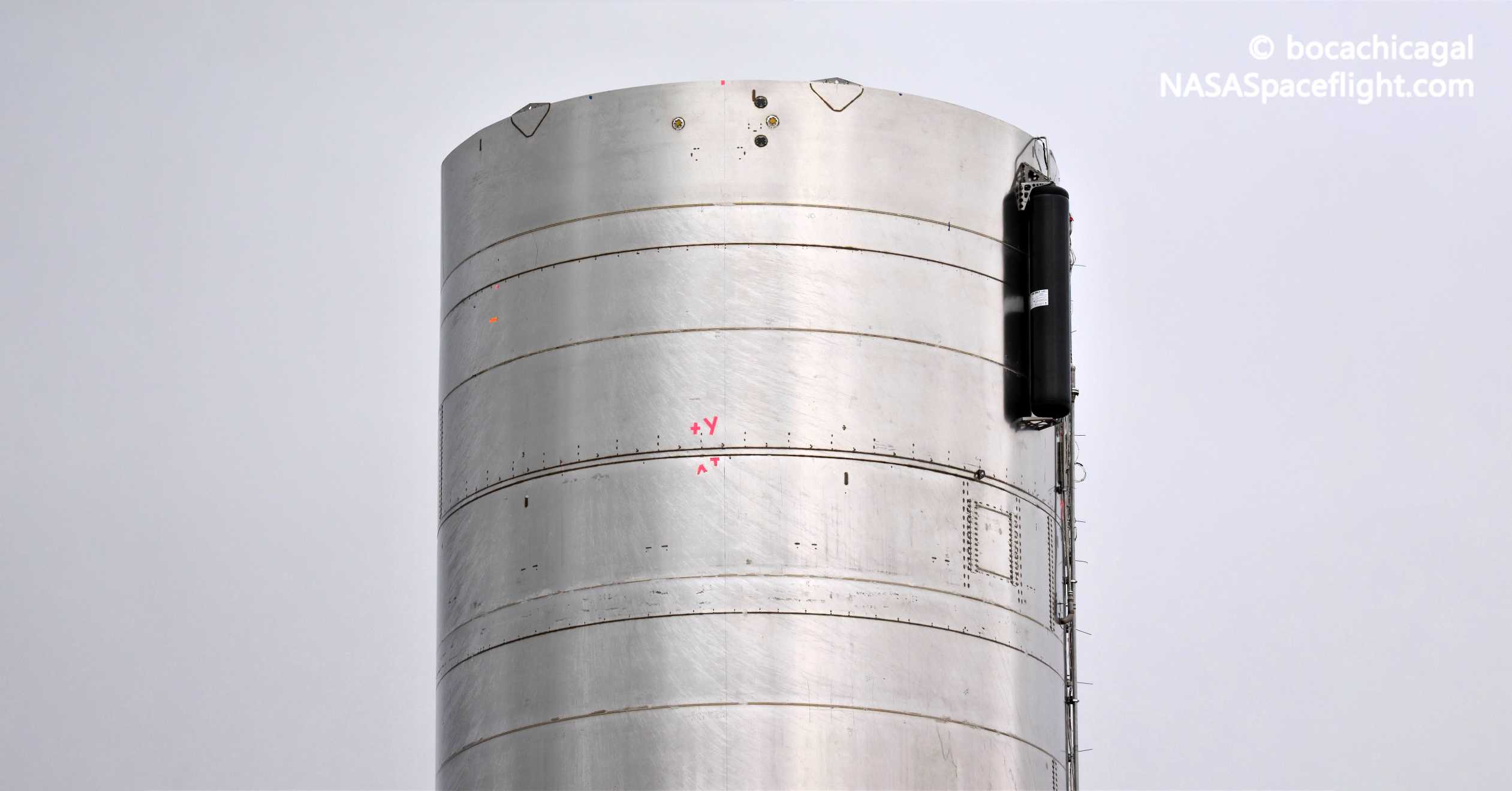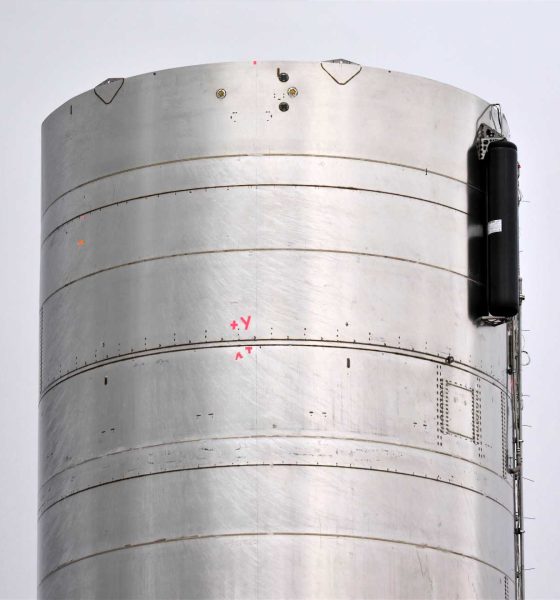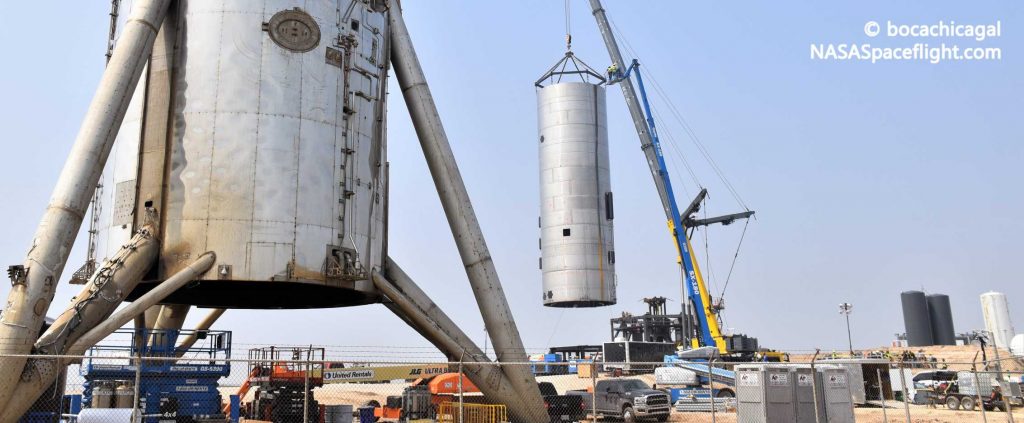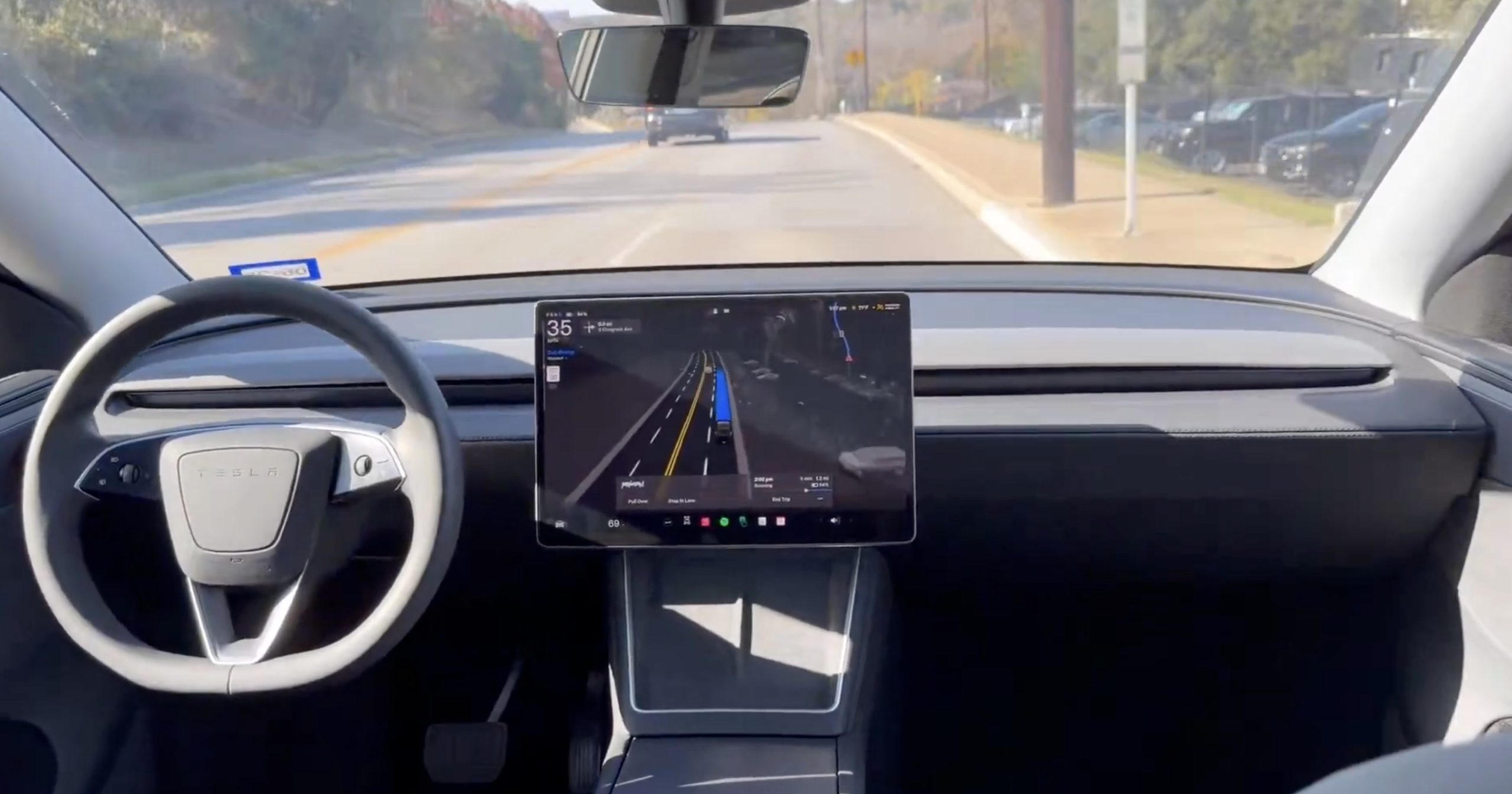

News
A SpaceX Starship rocket could take to the sky for the first time later this week
SpaceX has scrubbed its latest Starship static fire test for the third time since Friday but if another attempt succeeds within the next few days, a full-scale Starship prototype could lift off for the first time later this week.
SpaceX has attempted to perform a Starship static fire every day for the last three days without any luck, foiled by what must be mild technical issues and some extreme South Texas weather. That static fire – set to be Starship serial number 4’s (SN4) third – is required because SpaceX chose to replace the rocket’s installed Raptor engine (SN18) around 10 days ago after completing two successful tests on May 4th and 5th. Installed a few days after SN18 was removed, Starship and Raptor SN20 must now perform their own integrated static fire to ensure the complex systems are working properly.
Since SN4’s last test, SpaceX teams have been swarming the Starship prototype day and night, installing new COPVs (composite overwrapped pressure vessels; used to store high-pressure gas), new plumbing, and more. The specific purposes of all those in-situ changes can only be speculated at but what is clear is that SpaceX is preparing Starship SN4 for the first attempted flight test of a full-scale prototype, following in the footsteps of Starhopper’s bizarre but successful July and August 2019 hops. As SN4’s third Raptor static fire has slipped, though, so has that flight test. While the FAA has yet to officially publish a license for the 150m (~500 ft) Starship hop, NOTAMs (Notices to Airmen) filed recently suggest that that license and hop could come any day now.
Most recently, a NOTAM was filed on May 18th for what is likely Starship’s 150m hop test on Thursday, May 21st. Filed before SN4’s May 18th static fire test was aborted twice, that proposed May 21st hop test will almost certainly be delayed at least as long as the static fire that needs to precede it and is also dependent upon the FAA officially licensing the flight. The fact that NOTAMs are being filed for that flight strongly suggests that SpaceX and the FAA or in the late stages of hammering out a license, a process that can often involve a great deal of back-and-forth and compromise for experimental rocket launches.
Regardless, if or when Starship SN4 finally manages to fire up its new Raptor engine, it could be just a matter of days after that SpaceX attempts the first true Starship flight test. If everything goes according to plan, the ~30m (~100 ft) tall stainless steel rocket will lift off under the power of a single asymmetrically installed Raptor engine, capable of producing up to 200 metric tons (~450,000 lbf) of thrust with cryogenic liquid methane and oxygen propellant.

After lifting off from its ad-hoc South Texas launch mount, Starship SN4 will attempt to reach a peak altitude of 150m (~500 ft) and descend back down for a soft landing on an adjacent concrete pad, just like Starhopper did around nine months ago. A lot could go wrong: aside from using steel more than three times thinner than Starhopper’s, Starship SN4 will also be debuting an entirely new kind of landing leg, will be flying with asymmetric thrust, and will likely be using autogenous pressurization — all new challenges for SpaceX.
Nevertheless, there are also reasons for confidence. SpaceX has already successfully pressurized Starship SN4 all the way to 7.5 bar (~110 psi, sufficient for uncrewed orbital flight), performed multiple wet dress rehearsals and two Raptor static fire tests, and even tested what appears to be a new kind of cold gas thruster needed for roll control. Most importantly, even if Starship SN4 is destroyed during its next static fire or inaugural flight attempt, Starship SN5 is nearly at the same stage of completion and should be ready to take the reins almost immediately after the potential demise of its predecessor. With Crew Dragon’s inaugural NASA astronaut launch scheduled on May 27th, the rest of the month is set to be quite the event.

Elon Musk
Elon Musk and Tesla AI Director share insights after empty driver seat Robotaxi rides
The executives’ unoccupied tests hint at the rapid progress of Tesla’s unsupervised Robotaxi efforts.

Tesla CEO Elon Musk and AI Director Ashok Elluswamy celebrated Christmas Eve by sharing personal experiences with Robotaxi vehicles that had no safety monitor or occupant in the driver’s seat. Musk described the system’s “perfect driving” around Austin, while Elluswamy posted video from the back seat, calling it “an amazing experience.”
The executives’ unoccupied tests hint at the rapid progress of Tesla’s unsupervised Robotaxi efforts.
Elon and Ashok’s firsthand Robotaxi insights
Prior to Musk and the Tesla AI Director’s posts, sightings of unmanned Teslas navigating public roads were widely shared on social media. One such vehicle was spotted in Austin, Texas, which Elon Musk acknowleged by stating that “Testing is underway with no occupants in the car.”
Based on his Christmas Eve post, Musk seemed to have tested an unmanned Tesla himself. “A Tesla with no safety monitor in the car and me sitting in the passenger seat took me all around Austin on Sunday with perfect driving,” Musk wrote in his post.
Elluswamy responded with a 2-minute video showing himself in the rear of an unmanned Tesla. The video featured the vehicle’s empty front seats, as well as its smooth handling through real-world traffic. He captioned his video with the words, “It’s an amazing experience!”
Towards Unsupervised operations
During an xAI Hackathon earlier this month, Elon Musk mentioned that Tesla owed be removing Safety Monitors from its Robotaxis in Austin in just three weeks. “Unsupervised is pretty much solved at this point. So there will be Tesla Robotaxis operating in Austin with no one in them. Not even anyone in the passenger seat in about three weeks,” he said. Musk echoed similar estimates at the 2025 Annual Shareholder Meeting and the Q3 2025 earnings call.
Considering the insights that were posted Musk and Elluswamy, it does appear that Tesla is working hard towards operating its Robotaxis with no safety monitors. This is quite impressive considering that the service was launched just earlier this year.
Elon Musk
Starlink passes 9 million active customers just weeks after hitting 8 million
The milestone highlights the accelerating growth of Starlink, which has now been adding over 20,000 new users per day.

SpaceX’s Starlink satellite internet service has continued its rapid global expansion, surpassing 9 million active customers just weeks after crossing the 8 million mark.
The milestone highlights the accelerating growth of Starlink, which has now been adding over 20,000 new users per day.
9 million customers
In a post on X, SpaceX stated that Starlink now serves over 9 million active users across 155 countries, territories, and markets. The company reached 8 million customers in early November, meaning it added roughly 1 million subscribers in under seven weeks, or about 21,275 new users on average per day.
“Starlink is connecting more than 9M active customers with high-speed internet across 155 countries, territories, and many other markets,” Starlink wrote in a post on its official X account. SpaceX President Gwynne Shotwell also celebrated the milestone on X. “A huge thank you to all of our customers and congrats to the Starlink team for such an incredible product,” she wrote.
That growth rate reflects both rising demand for broadband in underserved regions and Starlink’s expanding satellite constellation, which now includes more than 9,000 low-Earth-orbit satellites designed to deliver high-speed, low-latency internet worldwide.
Starlink’s momentum
Starlink’s momentum has been building up. SpaceX reported 4.6 million Starlink customers in December 2024, followed by 7 million by August 2025, and 8 million customers in November. Independent data also suggests Starlink usage is rising sharply, with Cloudflare reporting that global web traffic from Starlink users more than doubled in 2025, as noted in an Insider report.
Starlink’s momentum is increasingly tied to SpaceX’s broader financial outlook. Elon Musk has said the satellite network is “by far” the company’s largest revenue driver, and reports suggest SpaceX may be positioning itself for an initial public offering as soon as next year, with valuations estimated as high as $1.5 trillion. Musk has also suggested in the past that Starlink could have its own IPO in the future.
News
NVIDIA Director of Robotics: Tesla FSD v14 is the first AI to pass the “Physical Turing Test”
After testing FSD v14, Fan stated that his experience with FSD felt magical at first, but it soon started to feel like a routine.

NVIDIA Director of Robotics Jim Fan has praised Tesla’s Full Self-Driving (Supervised) v14 as the first AI to pass what he described as a “Physical Turing Test.”
After testing FSD v14, Fan stated that his experience with FSD felt magical at first, but it soon started to feel like a routine. And just like smartphones today, removing it now would “actively hurt.”
Jim Fan’s hands-on FSD v14 impressions
Fan, a leading researcher in embodied AI who is currently solving Physical AI at NVIDIA and spearheading the company’s Project GR00T initiative, noted that he actually was late to the Tesla game. He was, however, one of the first to try out FSD v14.
“I was very late to own a Tesla but among the earliest to try out FSD v14. It’s perhaps the first time I experience an AI that passes the Physical Turing Test: after a long day at work, you press a button, lay back, and couldn’t tell if a neural net or a human drove you home,” Fan wrote in a post on X.
Fan added: “Despite knowing exactly how robot learning works, I still find it magical watching the steering wheel turn by itself. First it feels surreal, next it becomes routine. Then, like the smartphone, taking it away actively hurts. This is how humanity gets rewired and glued to god-like technologies.”
The Physical Turing Test
The original Turing Test was conceived by Alan Turing in 1950, and it was aimed at determining if a machine could exhibit behavior that is equivalent to or indistinguishable from a human. By focusing on text-based conversations, the original Turing Test set a high bar for natural language processing and machine learning.
This test has been passed by today’s large language models. However, the capability to converse in a humanlike manner is a completely different challenge from performing real-world problem-solving or physical interactions. Thus, Fan introduced the Physical Turing Test, which challenges AI systems to demonstrate intelligence through physical actions.
Based on Fan’s comments, Tesla has demonstrated these intelligent physical actions with FSD v14. Elon Musk agreed with the NVIDIA executive, stating in a post on X that with FSD v14, “you can sense the sentience maturing.” Musk also praised Tesla AI, calling it the best “real-world AI” today.








